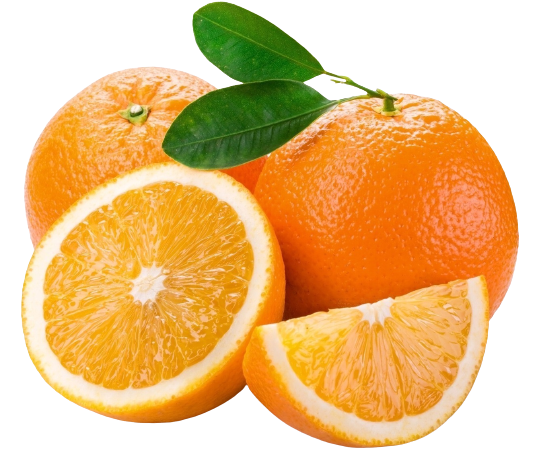- B.N.- Citrus sinensis
- Family– Rutaceae
- Chromosome No. – 2n=18
- Orign – China, Indochina
-
- Fruit type- Hesperidium
- Inflorescence type – Cymose (Solitary)
- Edible part – Juicy Placental Hairs.
- Maximum area UP and Maximum production and productivity AP
- It is non-climacteric
- Self-pollinated
Watch Lecture Video Part Ist
- Fruit type- Hesperidium
- Inflorescence type – Cymose (Solitary)

- Edible part – Juicy Placental Hairs.
- Maximum area in Uttar Pradesh and maximum production and productivity in Andhra Pradesh
- It is a non-climacteric fruit
- It is self-pollinated
- Degreening of citrus fruits is done by CaC2 (Calcium Carbide).
- Best time to pruning – late winter or early spring
- Zinc deficiency along with N2 is the major nutritional problem of Sweet orange
- Pineapple and Valencia – are indicators of greening
- Sweet orange is highly polyembryonic (ranges from 40 to 95%).
Varieties
- Hamlin – early variety
- Jaffa – Mid-season variety
- Pineapple – Mid-season variety
- Valencia – Late-season variety
- Mosambi – Most popular in MH, Best Rootstock – Rangpur lime
- Satgudi – Popular in AP, Best Rootstock – Rough Lemon
- Blood Red – Popular in North India Best Rootstock – karna khatta, Jatti khatti
- Shamuti – Seedless variety
- Washinghton neval
- Batavin
- Mudkhed – Bud mutant of Nagpur mandarin
Climate
- Sweet orange requires arid and semi-arid conditions with distinct summer and winter seasons with low annual rainfall.
- Low humidity and extreme cold result in good color development.
- High humidity favours thin skin and rich juice.
- Strong winds, hot or cold weather are harmful.
Soil
- A medium to light loamy soil rich in organic matter, well-drained soil with a pH of 6 to 8 is suitable
Propagation
- Commercially propagated by budding (Patch, Forkart).
- The best time for budding is when the plant has good sap flow and the cambium tissue is highly active.
Planting
- Pits are dug in summer 60 cm3 in size and filled with 20-30 kg of well-decomposed farmyard manure and good soil.
- The planting distance can be 4×4 or 5×5 m.
- Planting is done at the beginning of the monsoon. Where the rain is light.
- In areas with heavy rainfall, this is done towards the end of the monsoon.
Manure and Fertilizers
- N P K 290:200:240 gm/tree – at 10th year.
- FYM 100 kg/tree
- In North India, fertilizer is given in winter (December-January) and the second dose is given in April-May
- In western and southern India, fertilization is done before the onset of monsoon and sometimes a second dose is given in December or early January.
Irrigation
- During summer irrigation is required at short intervals of 7 days. However, in winter, irrigation is given at an interval of 12-15 days.
Interculture
- Weeds are reduced by light plowing at an interval of 3-4 months.
- Leguminous crops like berseem and lucerne can be grown along with sweet orange cultivation.
Training and Pruning
- The new plant should be supported if needed so that it does not bend.
- Shoots and suckers growing below the graft union should be removed.
- Do not prune the tree except by cutting and removing unwanted diseased branches.
Bahar treatment
- In the western and southern parts of India, growers prefer the Mrig bahar crop, as it helps them to cope with water scarcity during the months of April and May.
- This is done by withholding water 60 days before the normal flowering season and exposing the roots by removing the soil around the trunk of the tree about 30 days before the flowering season. The depth of soil removal is about 10-15 cm or so. After about 6-10 days of exposure, the soil is back filled with 20-25 kg of FYM followed by light irrigation
- Flowers normally occur once a year in the spring season (February–March) in northern India.
Fruit drop
- Pre-harvest drop is a very common problem.
- Mosambi and Blood Red varieties are more prone to fruit drop.
- Valencia late has very less chance of fruit drop
Cause of fruit dropping
A. Physiological Fruit Drops
- Formation of abscission layer at stem point
- Imbalance of growth regulators like auxin, cytokinin, gibberellin etc.
- Excess or deficiency of essential nutrients.
- Adverse weather conditions
- Interculture operations
Control measures
- Spray 2, 4-D (20 ppm) in the month of August
- Give the recommended amount of nutrients.
- Follow the best cultural practices in the right way at the right time
B. Pathological fruit drop
- Alternaria Citri and Colletotrichum Glosporiodes
- Stylar end rot after the fungal attack on the stylar end of the fruit
Control measures
- Spray copper fungicide during fruit set (August) and repeat it at 3 weeks intervals.
Harvesting
- The fruits are harvested when the color of the peel changes from dark green to light green to yellow.
- The other parameter is the TSS/acid ratio.
- Sweet orange fruits ripen in 9-13 months.
- In North India, harvesting is done in the month of December to February.
- South India fruits are harvested from October to March.
- November-January in central India.
Yield
The crop yield starts from the 5th year with 40-50 fruits per tree and stabilizes around the 8th year. The average production per tree after stabilization is about 500-600 fruits.
Storage
The ideal storage temperature and relative humidity are 6.0-6.5° C and 85-90 respectively which gives a storage life of about 15-18 weeks.
References cited
- Commercial Fruits. By S. P. Singh
- A text book on Pomology, Vol,1. by T. K. Chattapadhya
- Tropical Horticulture, Vol.1, by T. K. Bose, S. K. Mitra, A. A. Farooqui and M. K. Sadhu
